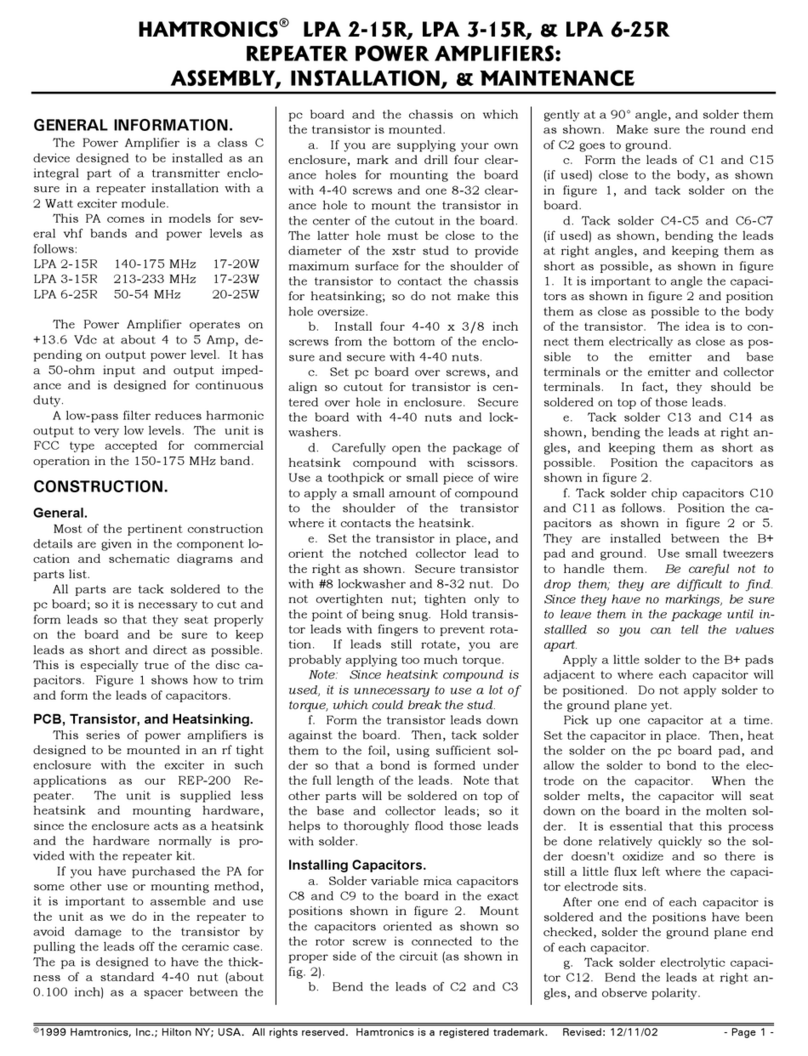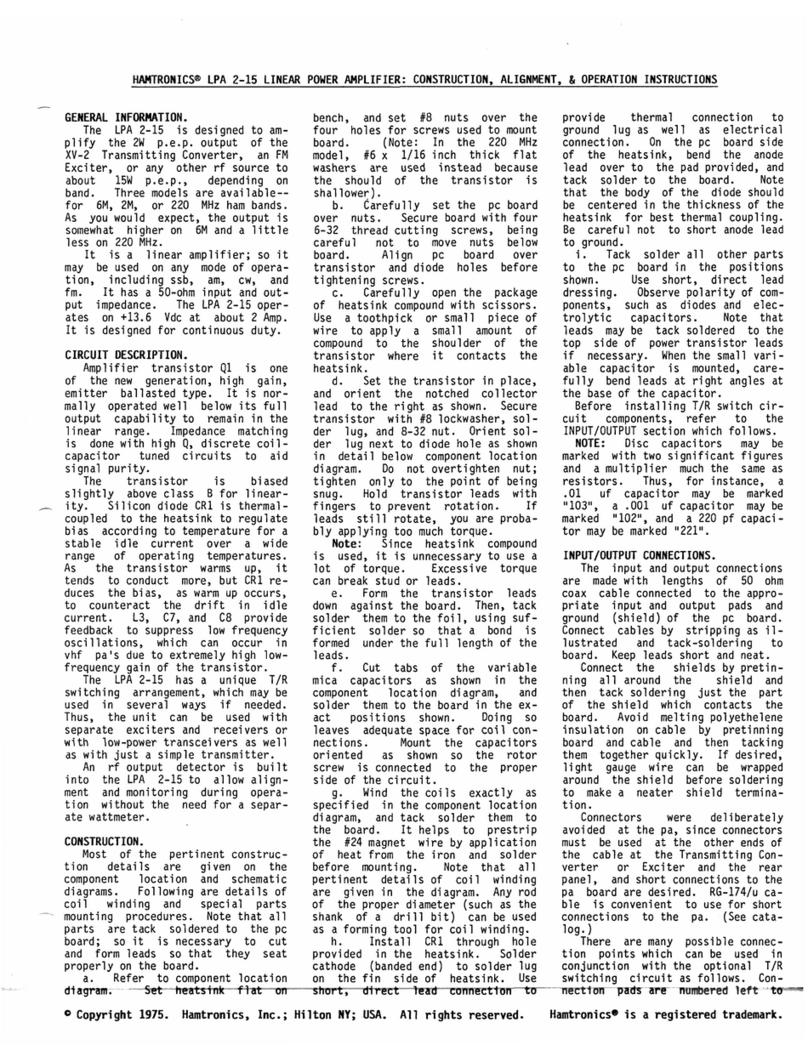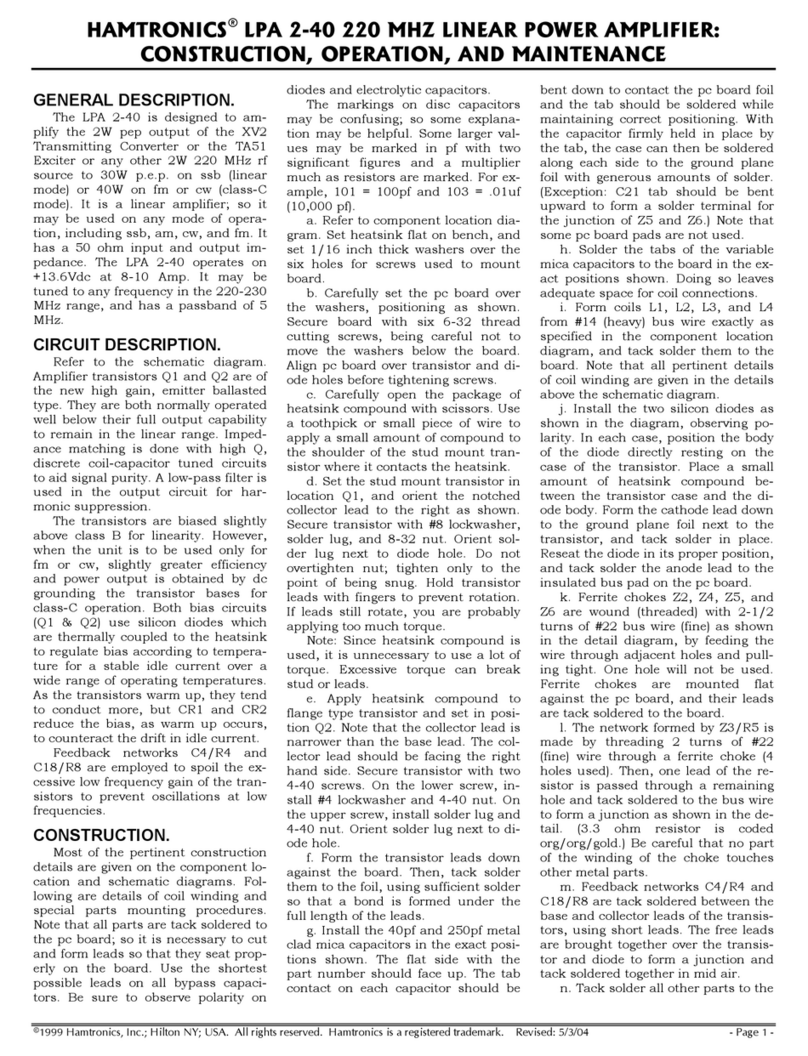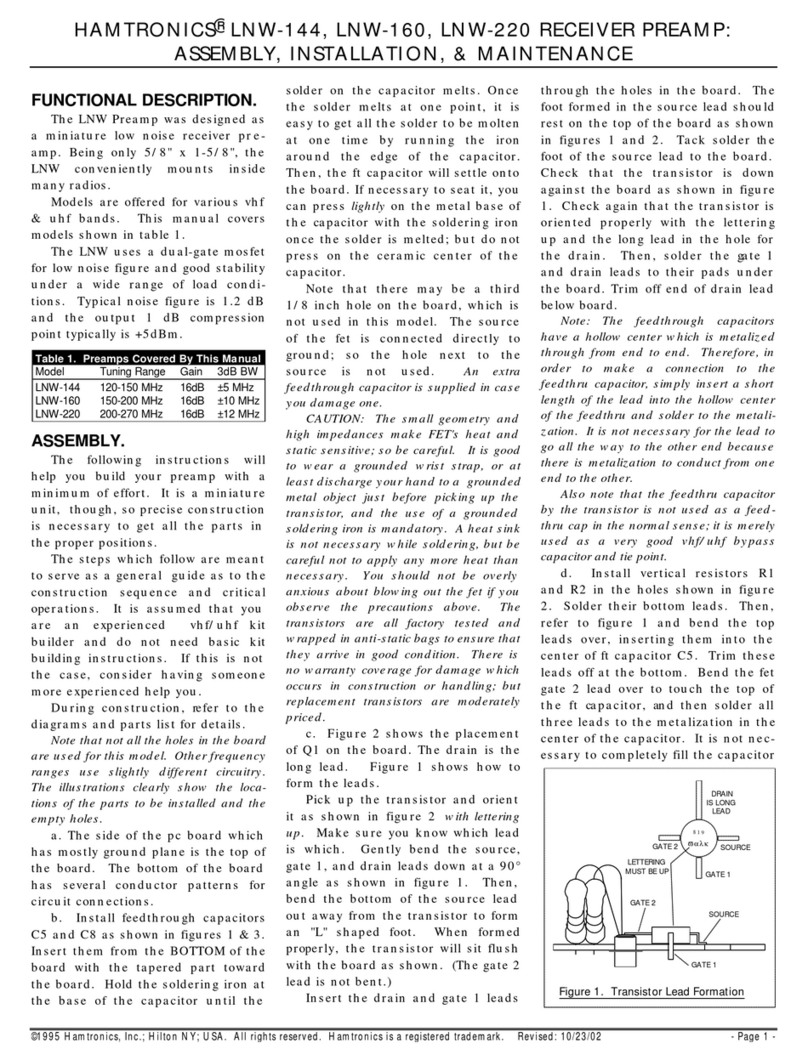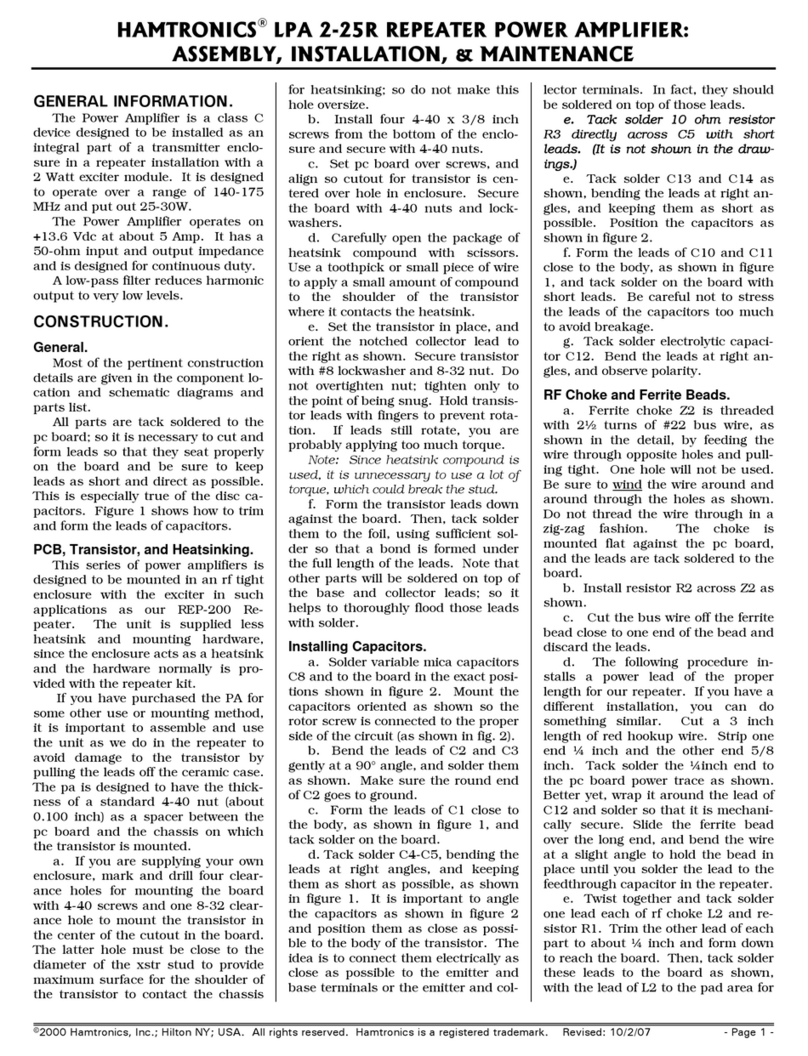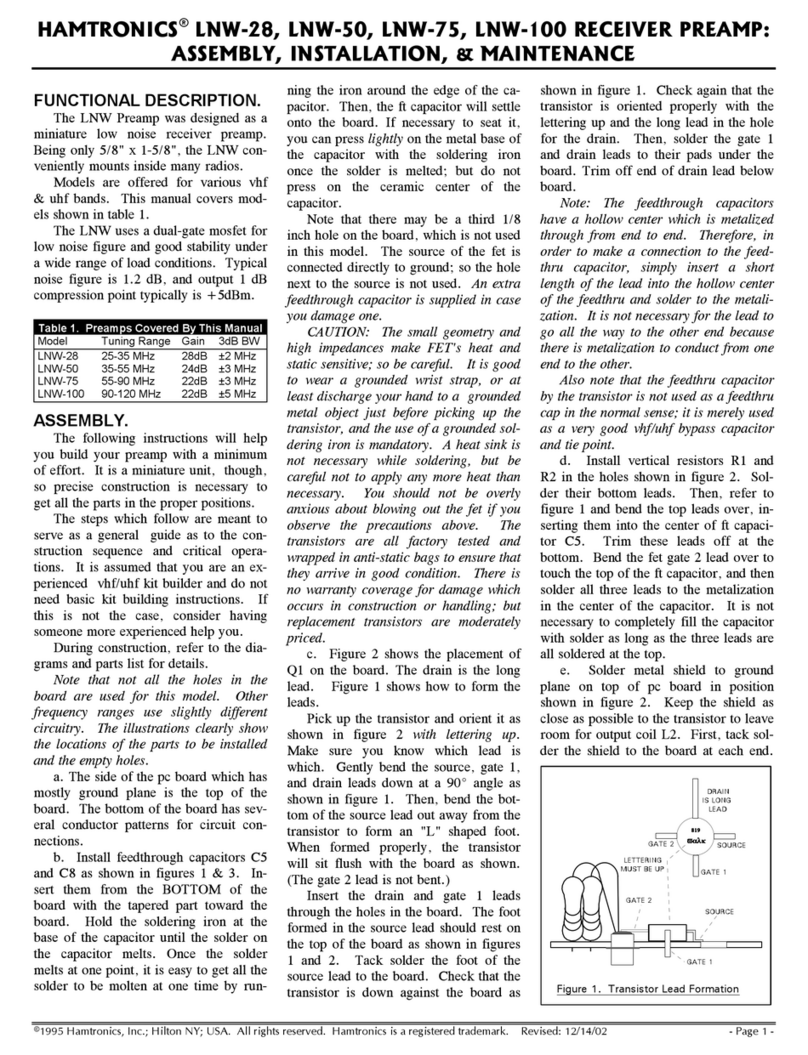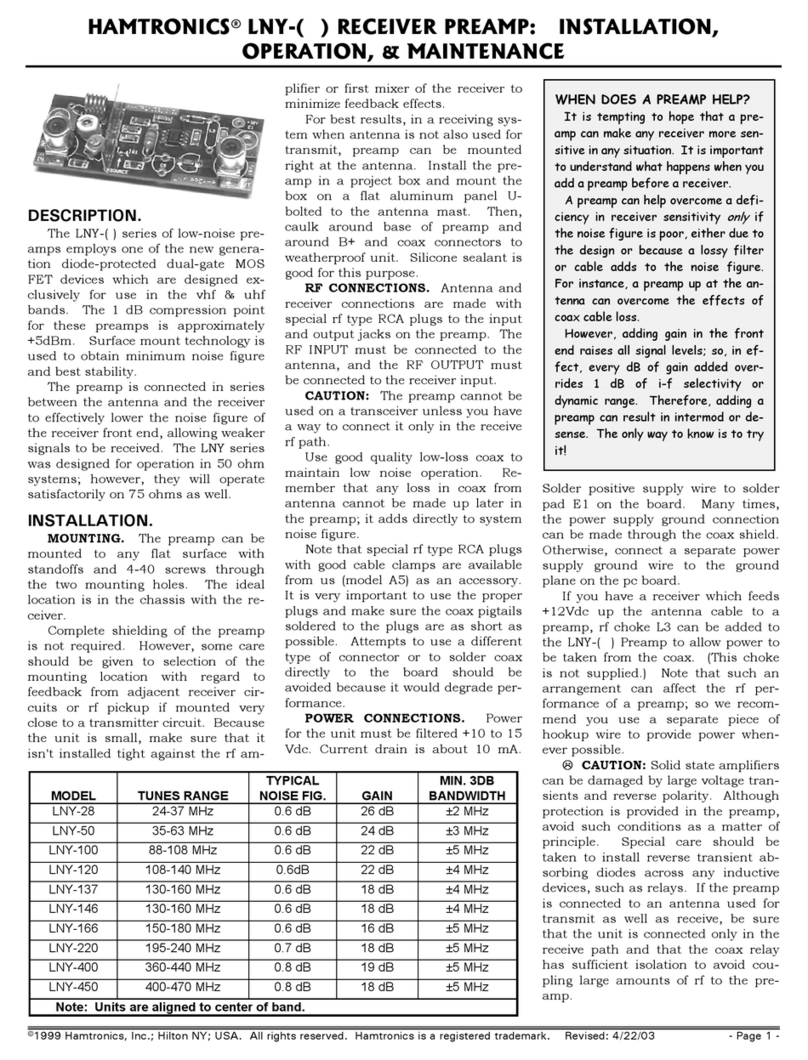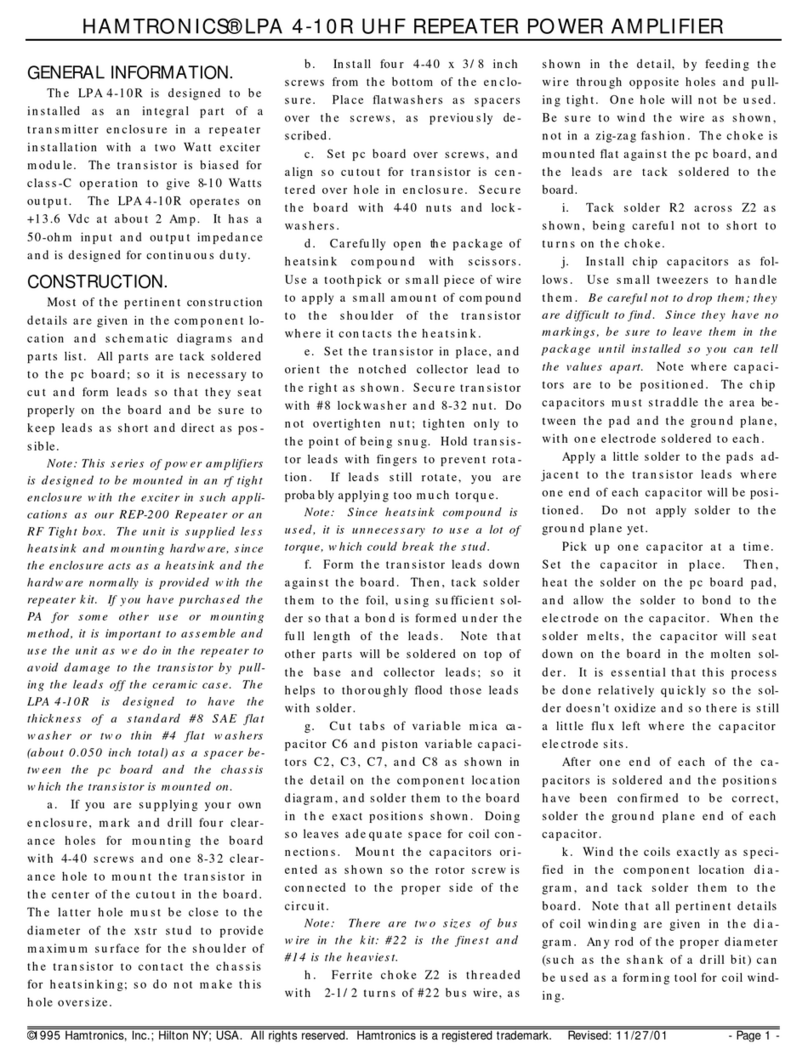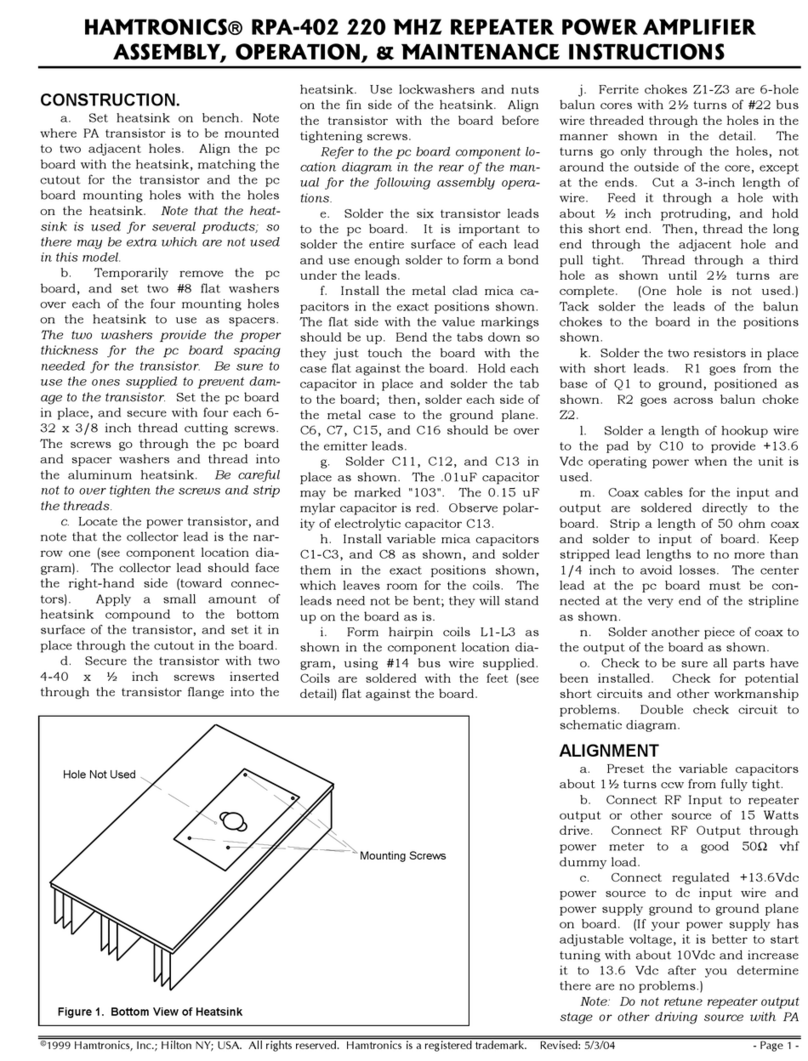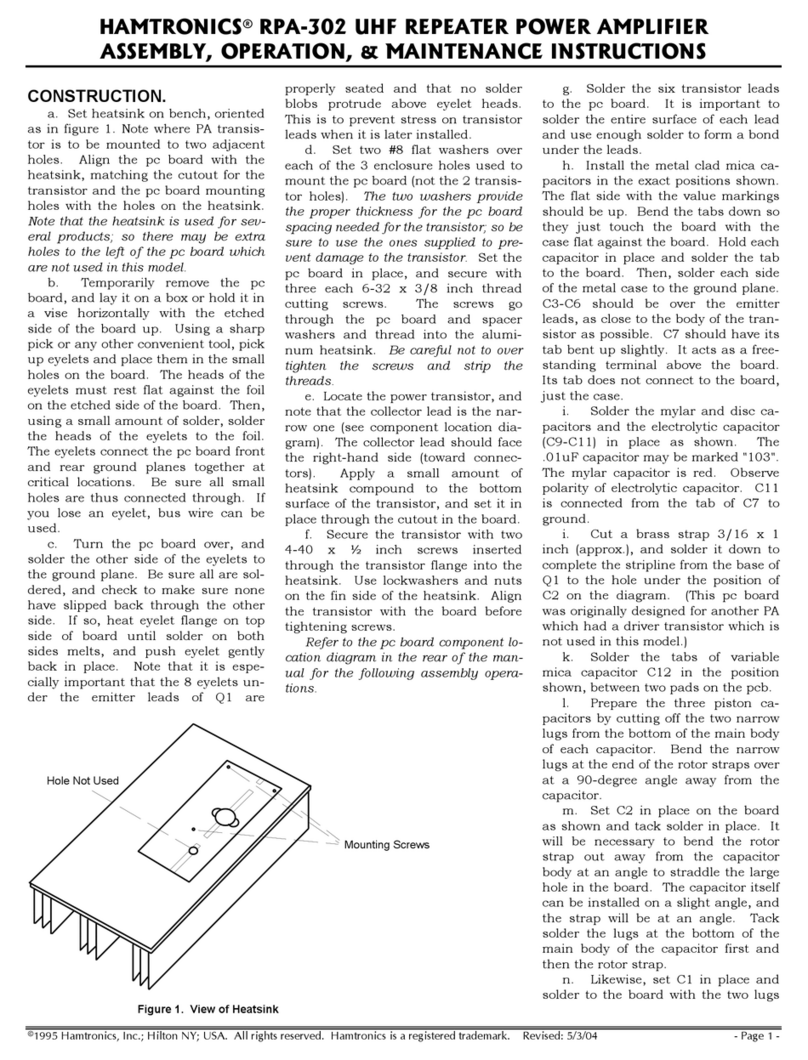
Hamtronics, Inc.; Hilton NY; USA. All rights reserved. Hamtronics is a registered trademark. evised:
GENERAL INFORMATION.
The LPA 3-15R Power Amplifier is a class C
device designed to be installed as an integral
part of a transmitter enclosure in a repeater
installation with a .5 Watt 0MHz exciter
module. Output power is approx 1 -15W at
13.6Vdc.
The Power Amplifier operates on +13.6 Vdc
at about to .5 Amp, depending on output
power level. It has a 50-ohm input and out-
put impedance and is designed for continu-
ous duty. A low-pass filter reduces harmonic
output to very low levels.
CONSTRUCTION.
General.
Most of the pertinent construction details
are given in the component location and
schematic diagrams and parts list.
All parts are tack soldered to the pc board;
so it is necessary to cut and form leads so
that they seat properly on the board and be
sure to keep leads as short and direct as pos-
sible. This is especially true of the disc capaci-
tors. Figure 1 shows how to trim and form
the leads of capacitors.
Mounting the board.
Note: This series of power amplifiers is de-
signed to be mounted in an rf tight enclosure
with the exciter in a separate rf tight box to
avoid feedback into the exciter. The unit is
supplied less heatsink since the enclosure acts
as a heatsink. It is important to mount the
unit carefully to avoid damage to the transis-
tor by pulling the leads off the ceramic case.
The PA is designed to have the thickness of
two thin #4 flat washers (about 0.050 inch to-
tal) as a spacer between the pc board and the
chassis which the transistor is mounted on.
a. Mark and drill four clearance holes for
mounting the board with 4-40 screws and
one 8-3 clearance hole to mount the transis-
tor in the center of the cutout in the board.
The latter hole must be close to the diameter
of the xstr stud to provide maximum surface
for the shoulder of the transistor to contact
the chassis for heatsinking; so do not make
this hole oversize.
b. Carefully open the package of heatsink
compound with scissors. Use the toothpick
to apply a small amount of compound to the
shoulder of the transistor where it contacts
the heatsink. Only a light coating is needed.
c. Install four 4-40 x 3/8 inch screws from
the bottom of the enclosure. Place two flat
washers as spacers over each of the screws,
as previously described.
d. Set pc board over screws, and align so
transistor is centered over hole in enclosure.
Secure the board with 4-40 nuts and lock-
washers.
e. Secure transistor with #8 lockwasher and
8-3 nut. Do not overtighten nut; tighten
with a nut driver only to the point of being
snug. Caution: Since heatsink compound is
used, it is unnecessary to use a lot of torque,
which could break the stud.
Coil Forming and Placement.
Figures 5 & 6 show exactly how coils are
formed. You need to form the coils exactly as
specified, using #18 bus wire supplied. Tack
solder them to the board in the positions
shown.
L1 and L3 actually are jumpers formed with
legs so that the top of the jumpers are 1/8
inch above the board, as shown in figure 6.
L4 is 1-3/4 turns on 1/4 inch i.d. L5 is 1-1/4
turns on 1/8 inch i.d. Spacing between turns
of the coils should be minimal, with turns
separated just enough to prevent shorting to-
gether. The feet are formed on L5 just so the
bottom wire of the coil doesn't short to the
ground plane. (Note that L1 and L3 are
shown in figure 5 at a smaller scale than the
rest of the coils.)
RF INPUT/OUTPUT
CONNECTIONS.
The input and output connections are made
with RG-174/u or similar 50-ohm coax cable
connected to the appropriate input and out-
put pads and ground plane of the pc board.
See diagram. Connect cables by stripping as
illustrated and tack-soldering to board. Note
that stripped length of coax is inductive; so
keep leads short and neat.
Avoid melting polyethelene insulation on
cable by pretinning board and cable and then
tacking them together quickly.
POWER CONNECTIONS.
+13.6Vdc should be connected to the B+
pad at the top of the pc board through the
ferrite bead provided. A hookup wire should
be attached to the ferrite bead’s lead or the
bead can be removed and installed directly
on hookup wire tack soldered in place of the
lead the bead is on (as shown in Fig. 5). The
ground return normally is connected to the
pc board through the mounting hardware.
Note that the output capability of the PA
drops rapidly as the voltage is reduced below
13.6Vdc; therefore, you should try to use a
power source of sufficient voltage and mini-
mize cable losses so that you have full B+
available at the PA.
CAUTIONS TO PROTECT
TRANSISTORS.
Because it is so easy to damage rf power
transistors in the field due to accidents and
abuse, transistor manufacturers do not pro-
vide any warranty to cover replacements
once a transistor is installed in the unit. They
test them thoroughly at the factory because
they are expensive parts. Therefore, they do
not honor claims that "the transistor must
have been bad from the factory". For your
protection, please be sure to observe the fol-
lowing precautions:
1. Sometimes, transistors may be de-
stroyed by parasitic oscillations occurring dur-
ing tuning because of the extremes of
capacitor settings, or due to accidental short-
ing of components. To protect against such
damage as much as possible, turn power sup-
ply voltage down to about 10 Volts when you
first apply power until the unit is tuned.
Then, turn up to full 13.6Vdc. Of course, final
tuning should be done at full 13.6V.
. Never exceed 14Vdc, as even a small
over-voltage causes strain on transistors be-
cause of additional heat.
3. Be sure you have a low impedance con-
nection to the power supply, i.e., short, heavy
cable.
4. Do not attempt to operate PA until ex-
citer has been properly aligned by itself, op-
erating into a 50-ohm load.
ALIGNMENT.
Alignment is very simple. Connect the input
to an exciter which has already been tuned
into a 50-ohm dummy load. Connect the
output to a 50-ohm load of sufficient power
rating. Use an in-line power meter.
Apply B+ and rf drive. Alternately tune the
four variable capacitors for maximum out-
put. Continue repeaking capacitors until
maximum output is achieved and all interac-
tions between capacitors are worked out.
Note that C8 normally tunes near or at min-
inimum capacitance (piston up near top).
Caution: Do not retune exciter with PA con-
nected. Once the exciter is tuned into a 50Ω
load, it should not be retuned. Tuning the in-
put of the PA takes care of matching the PA
to the exciter.
With 13.6Vdc power applied and .5W
drive, the 0 MHz unit should put out about
1 -15W, and the current drain should be
about - .5A.
HAMTRONICS
LPA 3-15R REPEATER POWER AMPLIFIER:
INSTALLATION, & MAINTENANCE
